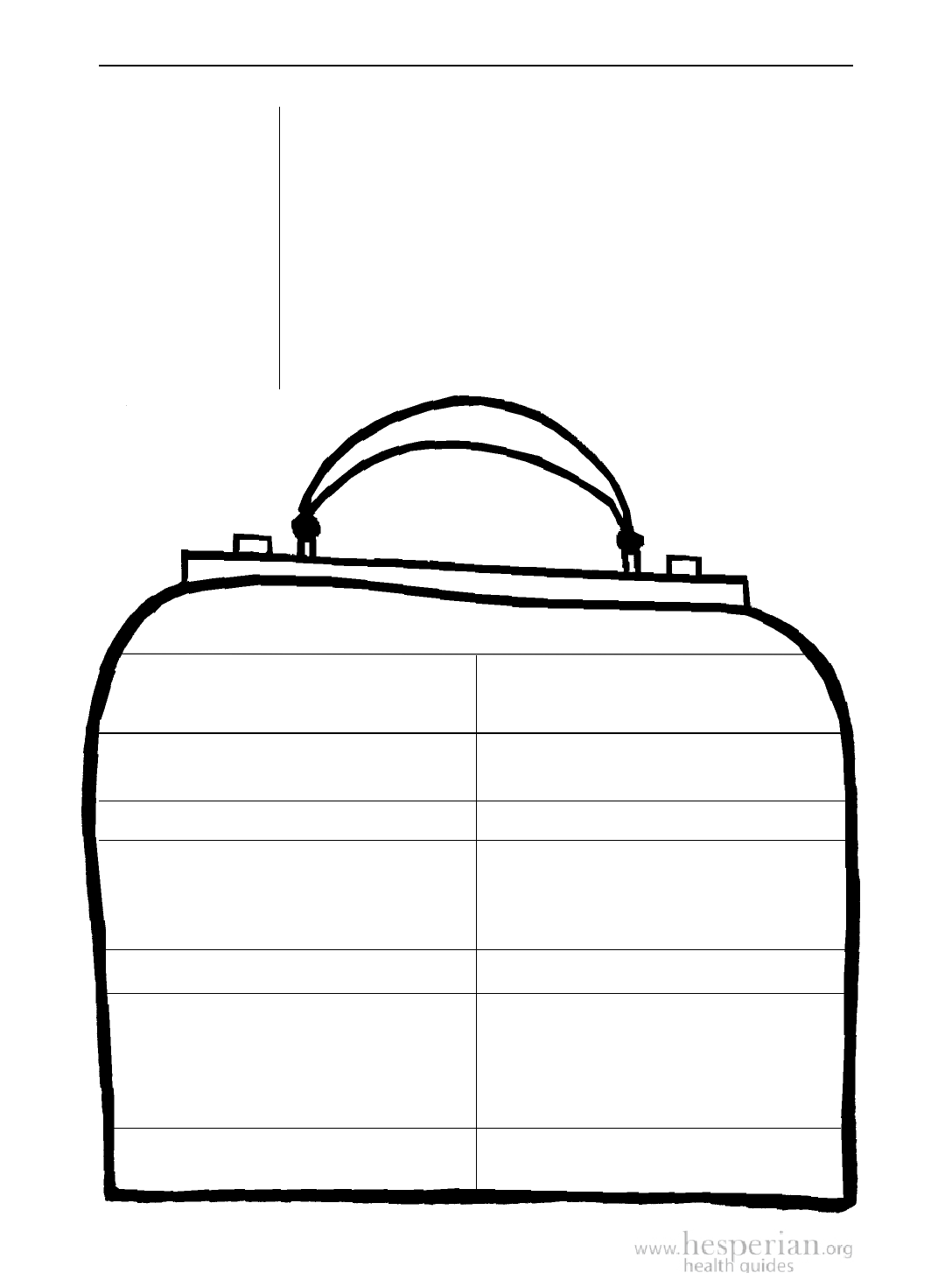
484 Common Medicines
Medicines
that Can
Save a
Woman’s
Life
Starting a community emergency medicine kit is one way you
can help save the lives of women where you live. The medicines
in this chart will help you start treatment until other medical
help is available. Make sure these medicines are in your kit or at
the nearest health post. If you need to buy them, try meeting
with leaders in your community. Explain how these medicines
can help, and see if you can find ways together to buy them.
What to include in a medicine kit:
Problem
pelvic infection (PID)
kidney infection
bleeding after birth, abortion, or miscarriage
infection after birth, abortion, or
miscarriage
eclampsia during or after birth
emergency pregnancy prevention
(after rape, broken condom, or
other emergency)
allergic reaction to antibiotic
Medicine
tablets: amoxicillin, azithromycin, cefixime,
doxycycline, erythromycin, metronidazole
for injection: ceftriaxone, spectinomycin
tablets: cefixime, ciprofloxacin, cotrimoxazole
for injection: gentamicin, ceftriaxone
oxytocin, ergometrine, or misoprostol
tablets: ampicillin, cefixime, doxycycline,
metronidazole
for injection: ampicillin, ceftriaxone,
clindamycin, gentamicin
diazepam or magnesium sulfate
Lo-Femenal (low dose) or Ovral (high
dose) birth control pills, or special
emergency pills (Postinor)
See pages 523-524 for other common
brand names.
epinephrine, diphenhydramine,
hydrocortisone or dexamethasone
Where Women Have No Doctor 2012